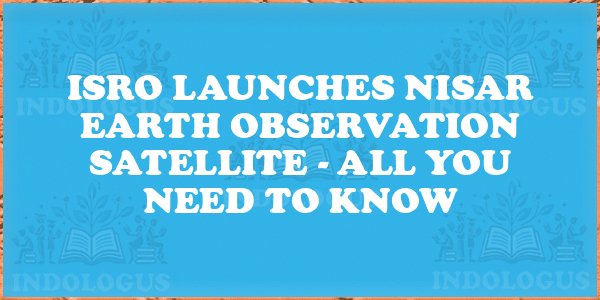The Indian Space Research Organisation (ISRO) is all set to launch the groundbreaking NASA-ISRO Synthetic Aperture Radar (NISAR) satellite from Sriharikota today, marking a significant milestone in Earth observation technology.
The NISAR Mission – A Game-Changer in Earth Observation
- Global Coverage: NISAR will scan the entire globe every 12 days, ensuring comprehensive monitoring.
- Mission Life: Designed for 3 years of operation, providing crucial data for environmental management.
- Orbit: Placed in a polar orbit at 747 km altitude for consistent lighting conditions.
Why NISAR is Unique
- Dual-Band Radar Technology:
- L-band SAR: Developed by NASA with a 24 cm wavelength.
- S-band SAR: Developed by ISRO with a 9 cm wavelength.
- Heavy Payload Capability: GSLV-F16 used for the first time due to NISAR’s weight.
- First Hardware Collaboration: ISRO and NASA collaborated on radar systems, enhancing global space cooperation.
Scientific and Strategic Significance of NISAR
- Earth Monitoring: Tracking ecosystems, ice sheets, and more for climate studies.
- Disaster Preparedness: Providing data for natural hazard monitoring.
- Resource Management: Monitoring agriculture, sea level rise, and more for sustainable planning.
- Global Transparency: All NISAR data will be available to the public, promoting global collaboration.
Voices from the Space Community
Experts from NASA and ISRO anticipate NISAR to revolutionize Earth science, aiding policymakers in climate change mitigation and resource planning.
Key Takeaways for Competitive Exams
- ISRO to launch NISAR satellite with advanced radar technology for global Earth observation.
- NISAR’s unique dual-band radar system enables detailed surface imaging and change detection.
- The mission’s scientific significance lies in enhanced disaster preparedness and resource management.
- NISAR promotes global transparency by providing open access to its data for scientific collaboration.




